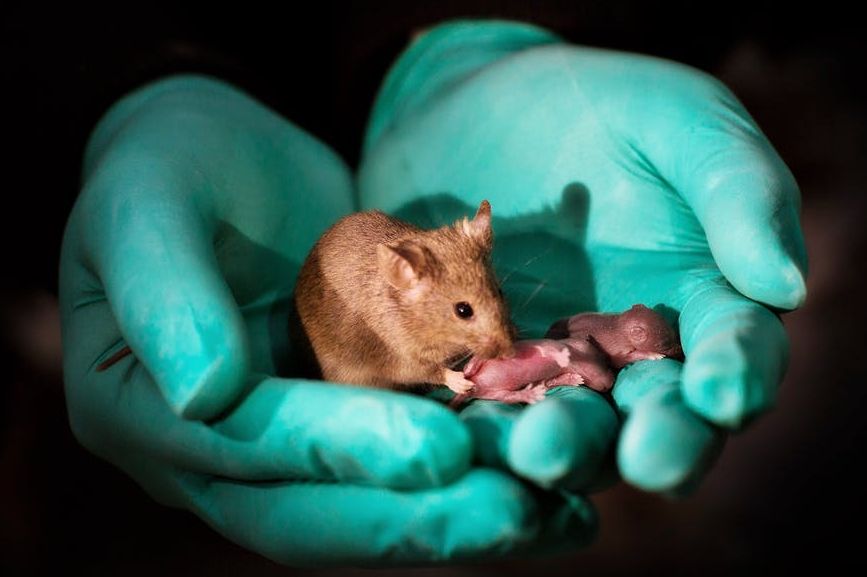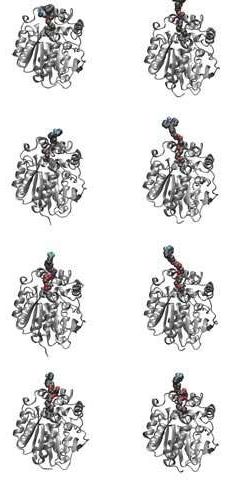The good news: Humanity will survive climate change. The bad news: The only ones who do will be genetically modified superhumans.



Exciting visitor at the Real Bodies (https://www.realbodies.it/) exhibit!
The lovely Ms. Chiara Bordi (https://www.facebook.com/Chiara-Bordi-474572166390000/), Miss Italia 3rd place runner up (aka the “Bionic Beauty”) stopping by to visit our associates at HealthQE (www.healthqe.cloud), and QantiQa (https://www.qantiqa.com/), to test out their new Musyke device
Bio-mechanics and Bio-acoustics
Two critical components in the regeneration, repair, and rejuvenation equation, and part of the integrated age-reversal paradigm of Embrykinesis at Bioquark Inc.- (www.bioquark.com)

The cancer is a group of diseases characterized by the uncontrolled growth and spread of abnormal cells, and in most of the cases develop into malignant masses of tissues called tumors, and it is the leading causes of mortality and a major public health challenge worldwide. In normal body, genes in the cell nucleus, containing long strings of DNA (deoxyribonucleic acid) regulate the controlled division and function of cells and any damage to DNA causes the mutation of genes, which in turn triggers the uncontrolled division of abnormal cells, leading to the damage of vital organs. Cancer cells can detach from the original mass of tumor and migrate to new locations through blood and lymphatic system and also cancer cells produce enzymes that are capable of breaking the normal cells. For cancer diagnostics, the conventional histopathological and radiological examinations are still used for evaluating the clinical and pathologic staging, needed for cancer treatments. Depends on the stage of cancer development, different treatment options like chemotherapy, radiation therapy, stem cell transplant, immunotherapy, hormone therapy, targeted drug therapy and surgery are advised. The major disadvantages of the available advanced treatment options include non localized invasion to other body parts, intolerable cytotoxicity, unsystematic distribution of antitumor agents, immune to chemical agents, low bioavailability and limited option to evaluate the tumor cell response to therapies4,5. In spite of the drawbacks of these advanced treatment options, cancer is curable if it is diagnosed at an early stage.
Phototherapy has been used for the treatment of jaundice, cancer, dermatological conditions, and ophthalmological disorders by simply using the light of certain selected wavelength. Photodynamic therapy, on the other hand is a method of photosensitizing the action of drugs to kill cancer cells, but the major drawback of this treatment is that most of the drugs used for photodynamic therapy remain activated for a long time, leading to overdose to damage non cancer cells. In the photo-catalytic process, no drug is used, instead the nontoxic semiconductor photo-catalyst like WO3 generates electron hole pairs, when it is exposed to the light of appropriate wavelength and these photo-generated charge carriers mediate oxidation and reduction reactions in the cancer cell to eliminate them.


“Once such superhumans appear, there are going to be significant political problems with the unimproved humans, who won’t be able to compete,” suggests the late physicist and author Stephen Hawking in The Sunday Times. “Presumably, they will die out, or become unimportant. Instead, there will be a race of self-designing beings who are improving themselves at an ever-increasing rate. If the human race manages to redesign itself, it will probably spread out and colonize other planets and stars.”
Hawking has caused an uproar by suggesting a new race of superhumans could develop from wealthy people choosing to edit their DNA. “There is no time to wait for Darwinian evolution to make us more intelligent and better natured. But we are now entering a new phase of what might be called self-designed evolution, in which we will be able to change and improve our DNA. We have now mapped DNA, which means we have read “the book of life”, so we can start writing in corrections.”
Hawking, who died in March, presented the possibility that genetic engineering could create a new species of superhuman that could destroy the rest of humanity. The essays, published in the Sunday Times, were written in preparation for a book that will be published on Tuesday.

Everyone knows it takes a male and a female to make a baby. But what a new study from the Chinese Academy of Sciences suggests is that maybe it doesn’t. In a new study, the team of scientists reports they did the seemingly impossible: Produce healthy baby mice from two mothers. The researchers describe their achievement in a breakthrough new paper in Cell Stem Cell.
The single-sex parent phenomenon has been observed naturally in reptiles, fish, amphibians, and invertebrates, but it was never thought to be possible in mammals, who reproduce differently. But as the team describe in their paper, all it took was overcoming the genetic limitations that usually make same-sex parenting impossible. The team, which also included researchers from Northeast Agricultural University in Harbin, China, used a combination of stem cells and CRISPR precision gene editing to produce healthy mice from two mothers. Interestingly, they tried the same with embryos from two fathers, but those offspring only lived a few days.
In the paper, they describe the bizarre, ingenious way the mouse embryos were formed using an egg from one mother a stem cell from another mother. The team’s breakthrough was figuring out how to manipulate the DNA of the stem cell so that the babies wouldn’t have birth defects.



In a new scientific article, researchers at Uppsala University describe how, using a completely new method, they have synthesised an artificial enzyme that functions in the metabolism of living cells. These enzymes can utilize the cell’s own energy, and thereby enable hydrogen gas to be produced from solar energy.
Hydrogen gas has long been noted as a promising energy carrier, but its production is still dependent on fossil raw materials. Renewable hydrogen gas can be extracted from water, but as yet the systems for doing so have limitations.
In the new article, published in the journal Energy and Environmental Science, an interdisciplinary European research group led by Uppsala University scientists describe how artificial enzymes convert solar energy into hydrogen gas. This entirely new method has been developed at the University in the past few years. The technique is based on photosynthetic microorganisms with genetically inserted enzymes that are combined with synthetic compounds produced in the laboratory. Synthetic biology has been combined with synthetic chemistry to design and create custom artificial enzymes inside living organisms.

A fluorescent molecule whose luminosity depends upon how fast it can rotate is helping researchers measure how viscous the fluid is inside different parts of a cell.
“There’s a lot of interest in the biophysical field in developing chemical probes that can be used to characterize the environment inside a cell or any kind of biological compartment,” says Peter Bond, from A*STAR’s Bioinformatics Institute.
Researchers from the United Kingdom and Singapore—including A*STAR scientists such as Bond’s team who led the computational arm of the project—have modeled, developed and tested a molecule comprising two parts; a genetic probe designed to home in on particular proteins, so it can be directed to wherever in a cell that protein is found; and a molecular rotor—a fluorescent molecule whose fluorescence lasts longer, the slower it spins. A*STAR researchers simulated how this molecule would perform in different microenvironments at scales of millionths or even billionths of a meter.